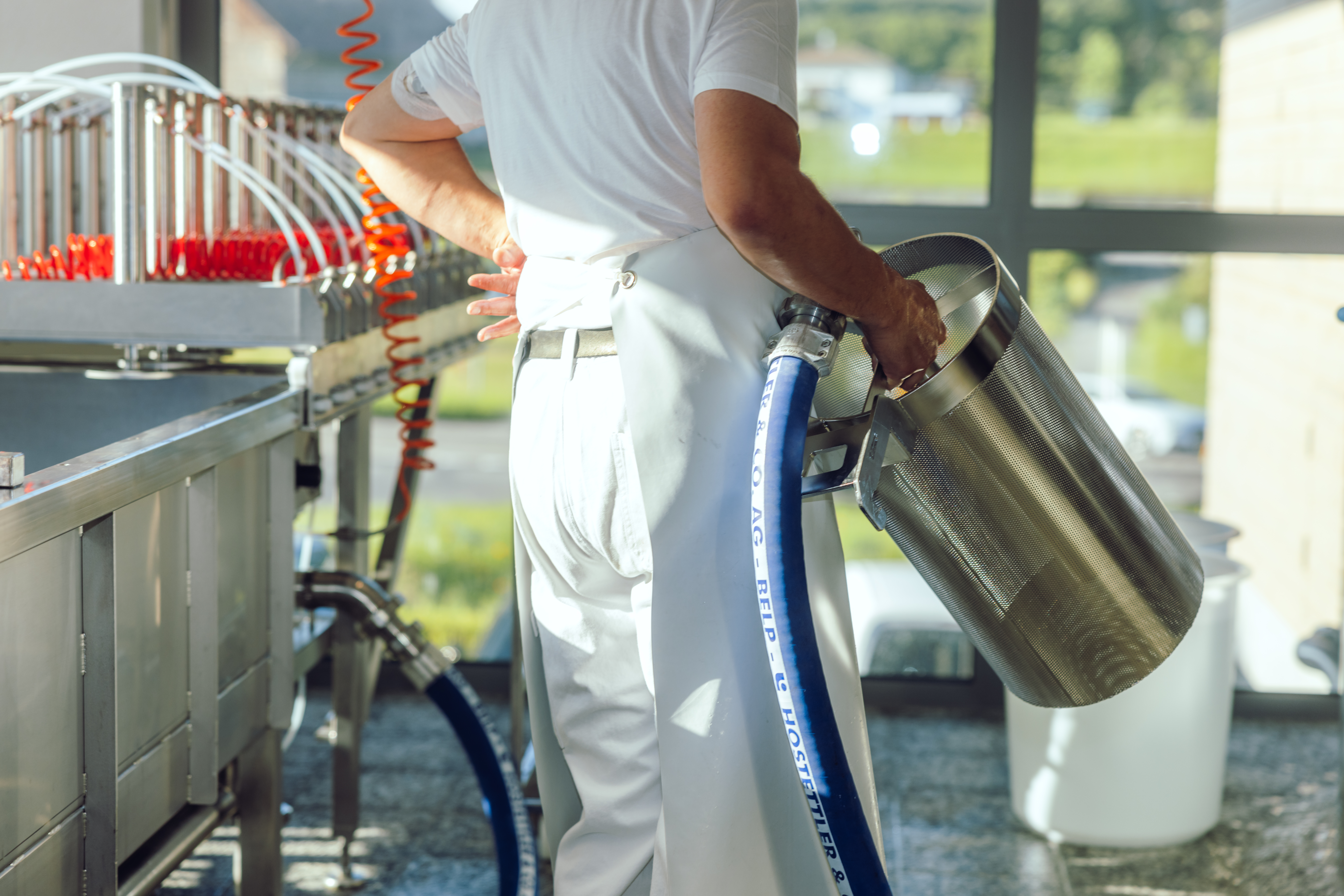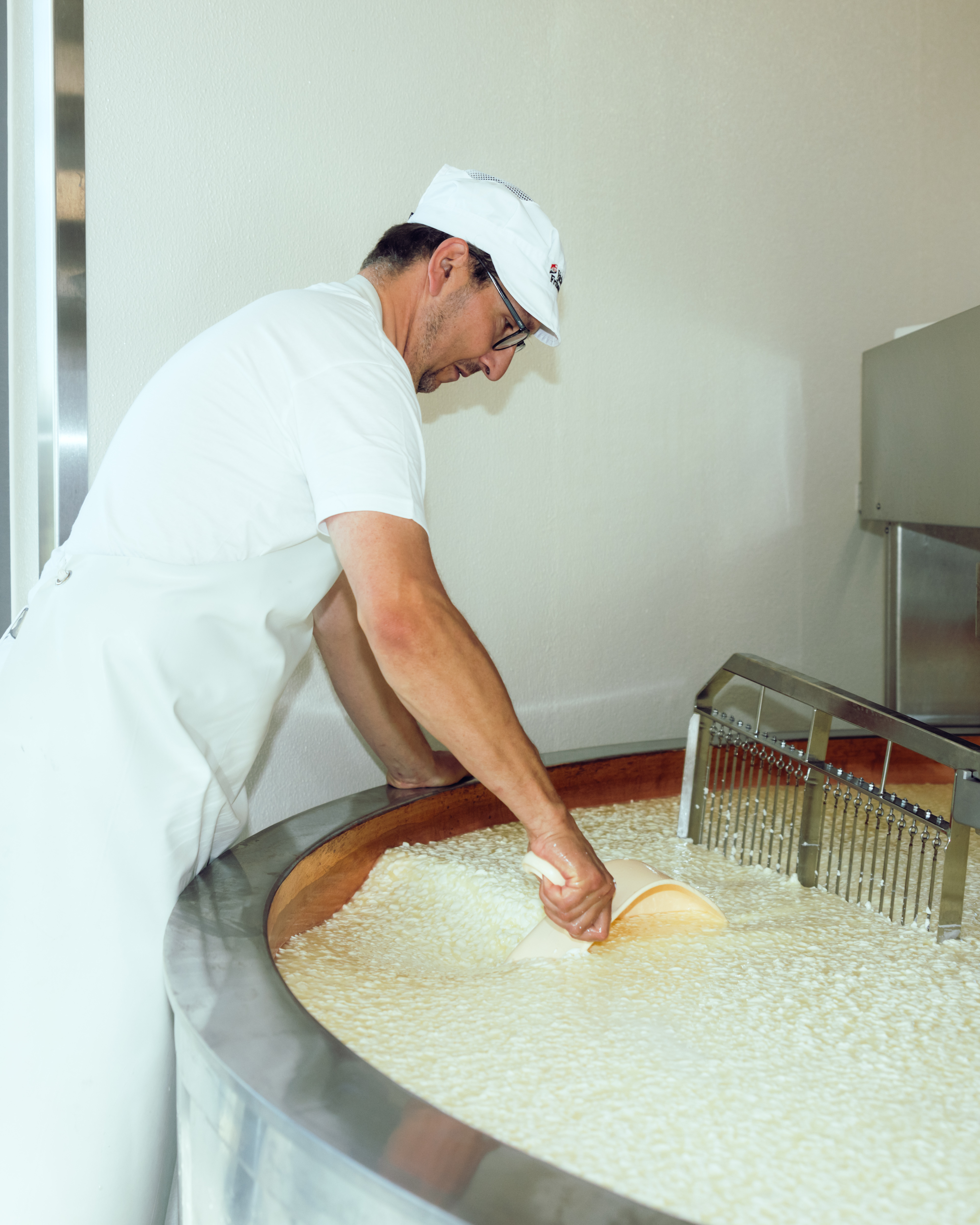Not only has the strategic use of technology made his day-to-day work easier, but the entire hot water requirement and a large proportion of the dairy’s energy needs are also supplied from their own sources.

Three into one
For this project, the Bösingen, Friesenheid and Wünnewil cheese cooperatives have merged to form the Untere Sense cheese cooperative. This is ultimately an economic decision, because the increasingly stringent requirements for the production of Gruyère AOP cheese and the hygiene regulations are becoming more and more difficult for smaller cheese dairies to fulfil – especially when they necessitate major investments.

A new cheese dairy after 90 years
Cheesemaker Louis-Alexandre Yerly has been making cheese in the Sense district of Fribourg for over 18 years. He began in a cheese dairy that was around 90 years old and moved to the new cheese dairy built right next door in mid-October 2023. It took a good year to build the new cheese dairy. During this time, production continued in the old cheese dairy; after the new building was commissioned, the old cheese dairy was demolished.

Production room as the centrepiece
The new building has not only given Yerly more light, thanks to large windows that reach down to the floor. More importantly, it has made his working day easier. Thanks to the strategic use of technology, the work processes have been thoroughly streamlined. The old cheese dairy was able to process a million kilograms of milk a year. Today, Yerly and his team process almost three million kilograms of milk into Gruyère AOP, Vacherin Fribourgeois AOP and Raclette Suisse. There are two 6400-litre vats and one with a capacity of 3200 litres. Up to 32 wheels of Gruyère AOP can be produced simultaneously on a fully automatic turning press. A second press is used to produce up to 65 wheels of Vacherin Fribourgeois AOP. The new cheese cellar has space for 4,200 wheels of Gruyère AOP and up to 2,400 of Vacherin Fribourgeois AOP and Raclette Suisse. A robot by the name of “Frisou” helps care for the cheese.

Own sources
The heat energy for the cheese dairy is produced using a steam boiler. For reasons of space, they run on gas, which is also better than oil from an ecological point of view. There would simply be no room for a wood-chip boiler. Other types of heating are out of the question, as they cannot reliably guarantee the high temperatures required for cheese production. The waste heat from the refrigeration systems is recovered via separate desuperheating and condensation tanks. It is then used to heat all the water needed by the cheese dairy and fed into the heating and air conditioning systems.
A photovoltaic system on the roof generates around 80,000 kilowatt hours per year, which covers around a third of the cheese dairy’s electricity consumption.


